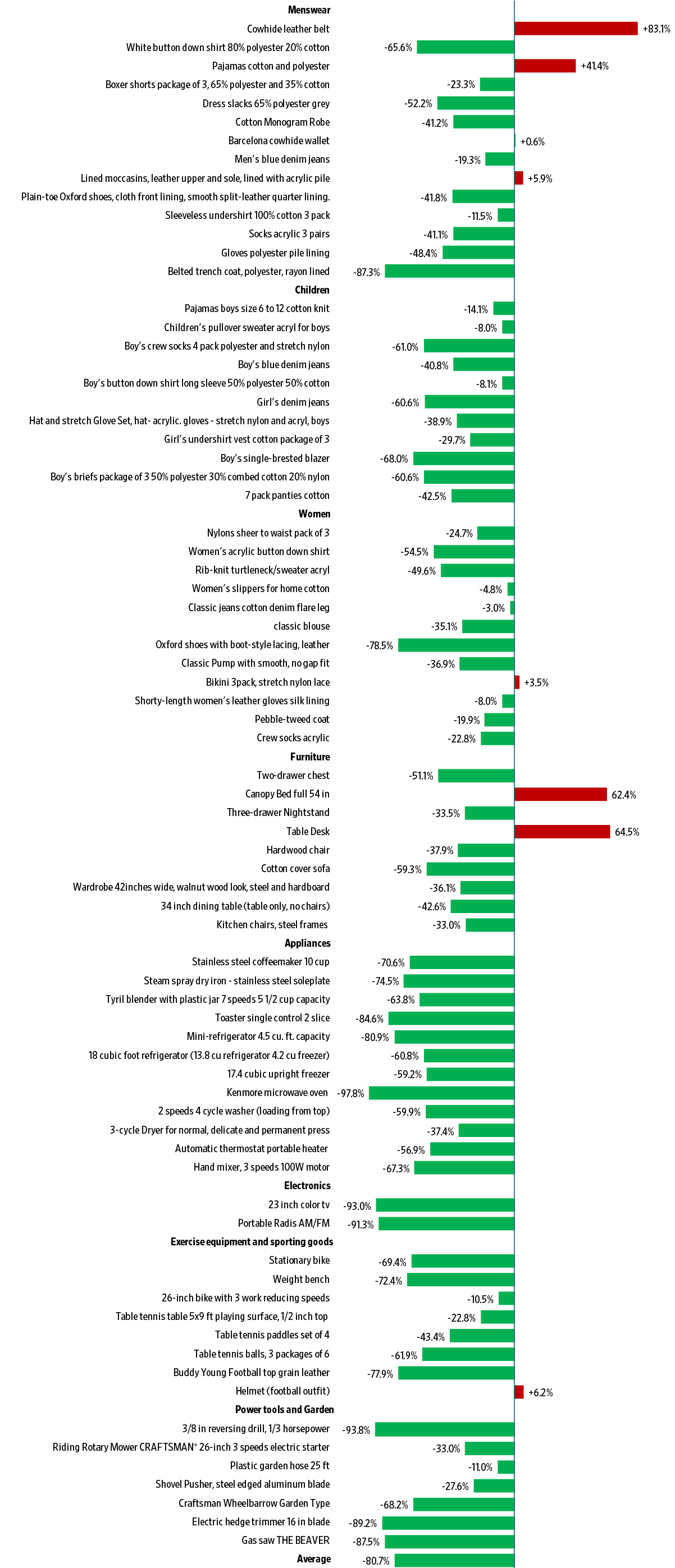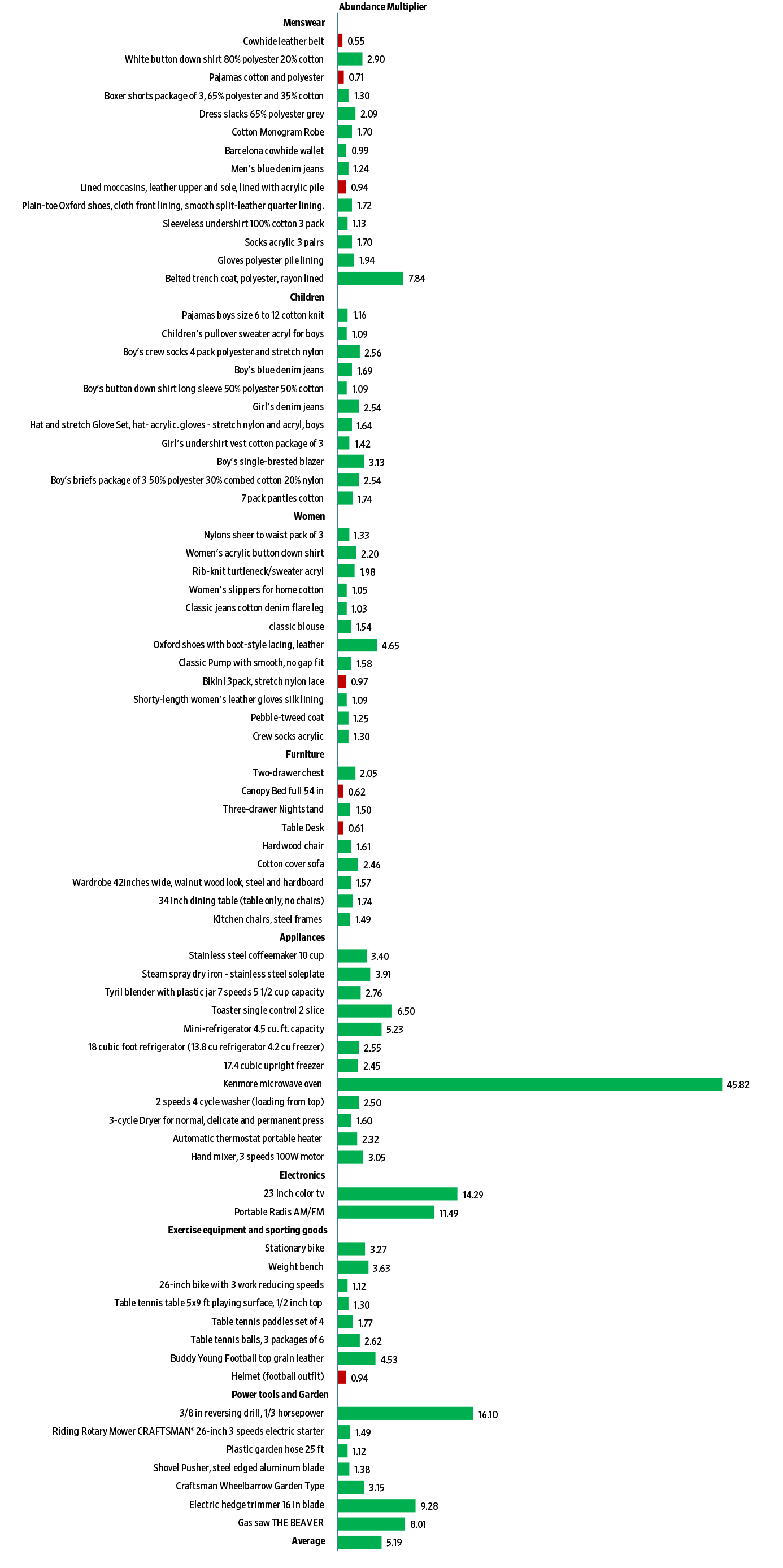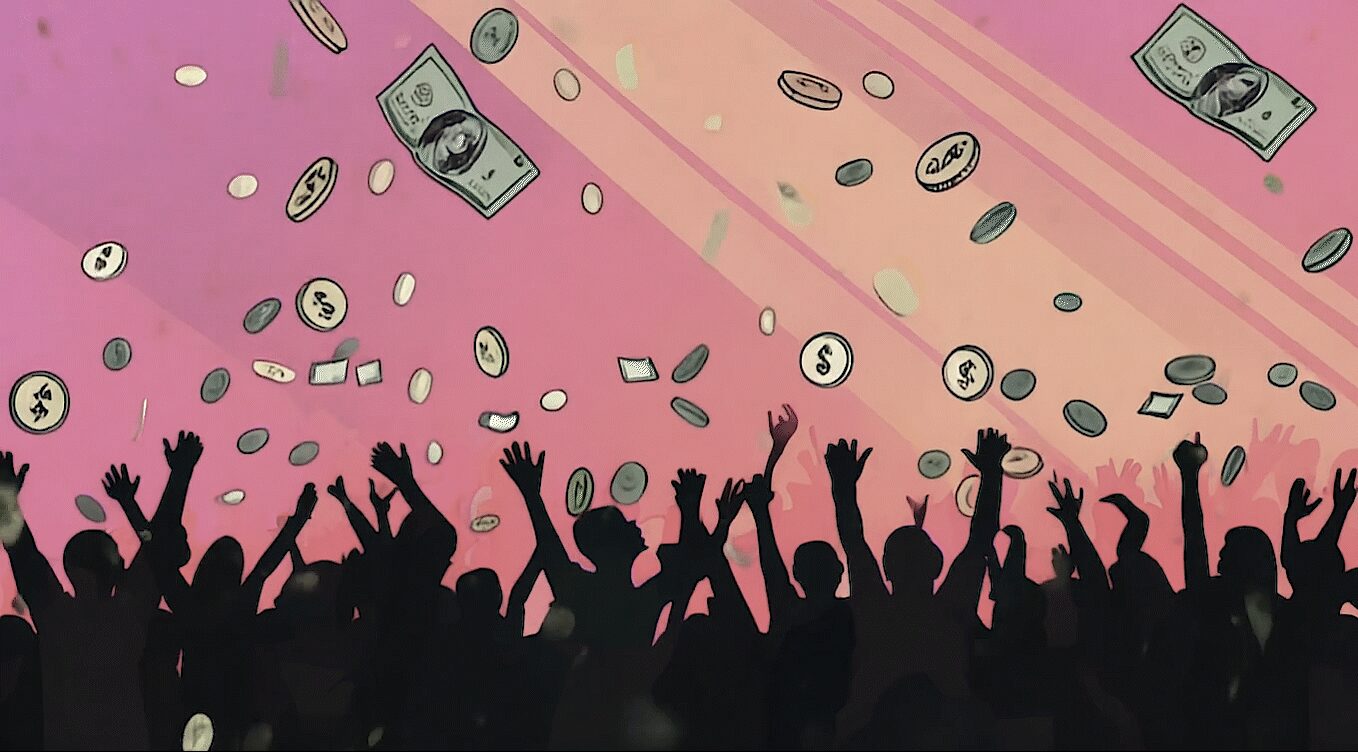“There are decades where nothing happens; and, there are weeks where decades happen,” observed Vladimir Lenin. The recent weeks grappling with the Covid-19 pandemic certainly fall into the weeks-where-decades-happen category. What’s more, the trillions of dollars being spent on pandemic-fighting strategies might well make or break the decades to come, as I recently wrote.
Take telehealth, the adoption of which has seemingly been on the horizon for decades and suddenly, within a few weeks after Covid-19, achieved near universal embrace. McKinsey estimates that providers are seeing 50 to 175 times more patients via telehealth now than before Covid-19. What’s more, 57% of providers view telehealth more favorably than before and 64% report that they are more comfortable using it. These punctuated changes in perception, preference and practice could vault the telehealth market from $3 billion pre-Covid to $250 billion and, in the process, force the rewiring of the entire healthcare delivery system, according to McKinsey.
The technological drivers enabling telehealth are reshaping every other aspect of the decades to come, too. I previously introduced these drivers as six Laws of Zero that underpin a planning approach that Paul Carroll and I call the Future Perfect. In this article, I lay out the six laws in more detail.
The basic idea is that six key drivers of humanity’s progress—computing, communications, information, energy, water and transportation—are headed toward zero cost. That means we can plan on being able to throw as much of these resources as we need to smartly address any problem. Success in doing so would bring us closer to the Future Perfect. Alternatively, like gluttons at an all-you-can-eat buffet, we could binge in ways that exacerbate societal issues such as health, equity, civility, privacy and human rights.
Our Future Perfect approach, which builds on an approach developed by Alan Kay for inventing the future, projects the Laws of Zero into the future to imagine how vast resources could address important needs in key pillars of society, such as electricity, food, manufacturing, transportation, shelter, climate, education and healthcare. We’ve chosen 2050 as a marker because 30 years is far enough in the future that one isn’t immediately trapped by incremental thinking. Instead, we can explore how exponential resource improvements might radically alter the range of possible approaches. The question becomes “Wouldn’t it be ridiculous if we didn’t have this?”
The 30-year visioning is intended as a mind-stretching exercise, not precise forecasting. This is where creativity and romance lives, albeit underpinned by the deep science of the Laws of Zero rather than pure fantasy. We use a technique we call “future histories” to develop powerful narratives of compelling futures. We then pull backwards to today and chart possible paths for turning the 30-year visions into something more concrete. As Alan Kay says, “the best way to predict the future is to invent it.”
Now, let’s explore the drivers and understand what zero cost really does, to lay the foundation for designing those remarkably different and (hopefully) better futures.
Computing
That computing has followed the Law of Zero comes as no surprise to anyone familiar with Moore’s Law, the observation by Intel co-founder Gordon Moore in 1965 that computing was doubling in power and halving in cost every 2 years. Ray Kurzweil has even observed that Moore’s Law describes not just integrated circuits but more than a century of computing, as shown below.
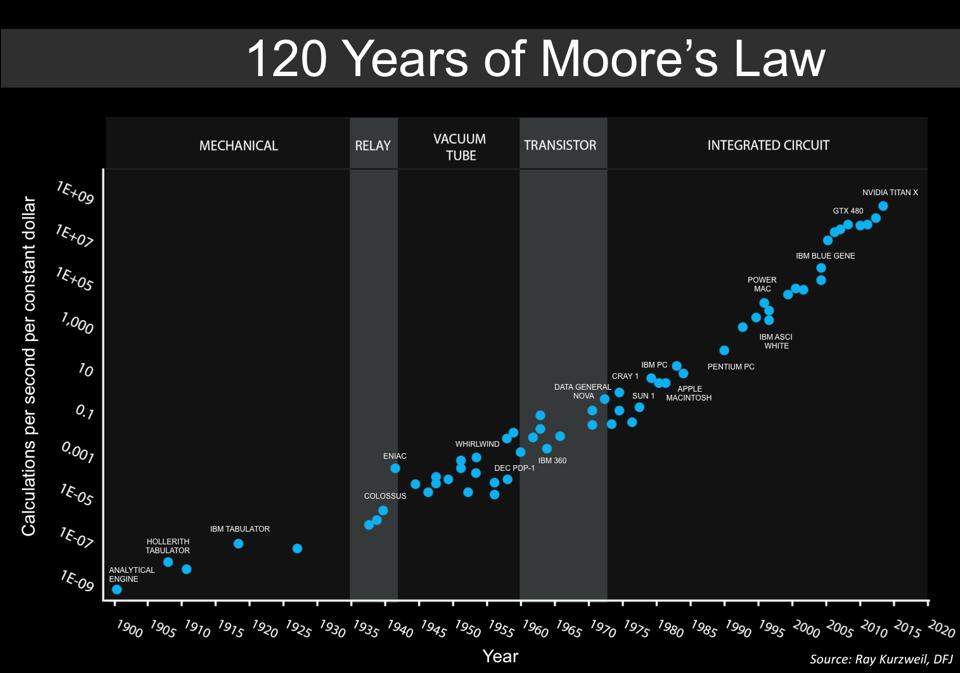
One consequence is that the smartphone in your pocket has over 100,000 times more processing power and one million times more memory than the computer that guided Apollo 11 to the moon and back—at a percentage of cost that effectively rounds to zero. While computing power obviously isn’t free, as anyone buying a smartphone knows, it looks almost free from any historical distance.
Now consider computing in 2050. If Moore’s Law remains a guide, computing power would double about 20 times in the next 30 years. Cost would be cut in half 20 times. In other words, we can look forward to computing power more than one million times faster than today with a per unit cost of today’s divided by million.
Even if Moore’s Law slows and engineers’ progress in cramming more circuits onto a silicon chip finally diminishes, innovations in computing architecture, algorithms and (perhaps) quantum computing are emerging to pick up the slack—and perhaps even quicken the pace. Rodney Brooks, former director of MIT’s Computer Science and Artificial Intelligence Lab, argues that the end of Moore’s Law, as we traditionally knew it, will unleash “a new golden era” of computing.
Communications
The first message that inventor Samuel Morse sent on his experimental telegraph line between Baltimore and Washington DC in 1844 was, “What hath God wrought?” Some form of that astonishment has been expressed time and again as communications have moved from the telegraph to the telephone to the ubiquitous, digital communications of today. Communications is becoming ever richer, too, as having bandwidth to burn means that video (and, in time, augmented and virtual reality) can be part of every connection.
Reach will keep expanding, too. Riding on the computing Law of Zero, communications will expand into every corner of the globe, as tens of billions of devices and trillions of sensors are incorporated into a tapestry of communication. In other words, we aren’t just talking about humans connecting with each other.
Now, history suggests that expectations about communication should be tempered. The telegraph, for instance, was predicted in 1858 to bring world peace:
“It is impossible that old prejudices and hostilities should longer exist, while such an instrument has been created for an exchange of thought between all the nations of the earth.”
But, the telegraph turned out to be a critical instrument of war as well. The Union armies relied on some 6.5 million messages during the Civil War, and the telegraph provided the North key tactical, operational and strategic advantages over the Confederacy.
The Internet created similar delusions. We’d all understand each other better and communicate freely, so rainbows and unicorns…. Clearly, no one had imagined Twitter in those early days. No one realized how much Facebook, etc. could increase tribalism and exacerbate divides.
Still, whatever winds up flowing through the pipes in our future – whether butterflies or raw sewage – the pipes will be almost infinitely wide, and the cost will be a flat, low rate. Draw the graph of cost vs. performance from today’s perspective, and that cost in 2050 will be so low that let’s call it zero.
Information
In the late 1990s, during the Internet’s coming out party, it started to become clear just how much information could be collected on people’s online behavior. But Nicholas Negroponte, the founder of the MIT Media Lab, defiantly told us that, while his credit card company or someone else might know that he went to see a certain movie, “They won’t know whether I liked it!”
No longer. Just a few buildings away from Negroponte’s old office at MIT, researchers can monitor motion, heartrate, breathing and even emotions for people simply by how they reflect ambient radio waves, such as Wi-Fi. So, sensors in a movie theater can already get a good read on how Negroponte and the rest of an audience felt about a film. Mix in a little genomics, biology, financial data, social preference data, census data, etc., and, whoa, we’re naked, whether we want to be or not.
Furthermore, if you think social media is revealing now, wait until you see what’s coming. Already, a startup called Banjo has become a sort of network of networks and is monitoring massive amounts of private and public social feeds around the world. It divides the globe into 7 trillion sectors and monitors in real time what is happening in each of those small areas.
It doesn’t take much imagination to conjure up the dystopian possibilities; but, the ability to monitor everything and everywhere has plenty of potential benefits, too.
In a simulation described by the Attorney General of Utah, Banjo was able to solve a child abduction case in minutes. The same case eluded a multi-agency task force that applied hundreds of person-hours using traditional methods. A real-life example: by matching a social media post about the sound of gunfire with closed-circuit video camera showing gunfire, Banjo was the first to detect the 2017 shooting at the Mandalay Bay resort in Las Vegas.
How much will all that information cost? A good indicator is the sequencing cost per genome, which is falling at an exponential rate even faster than Moore’s Law.
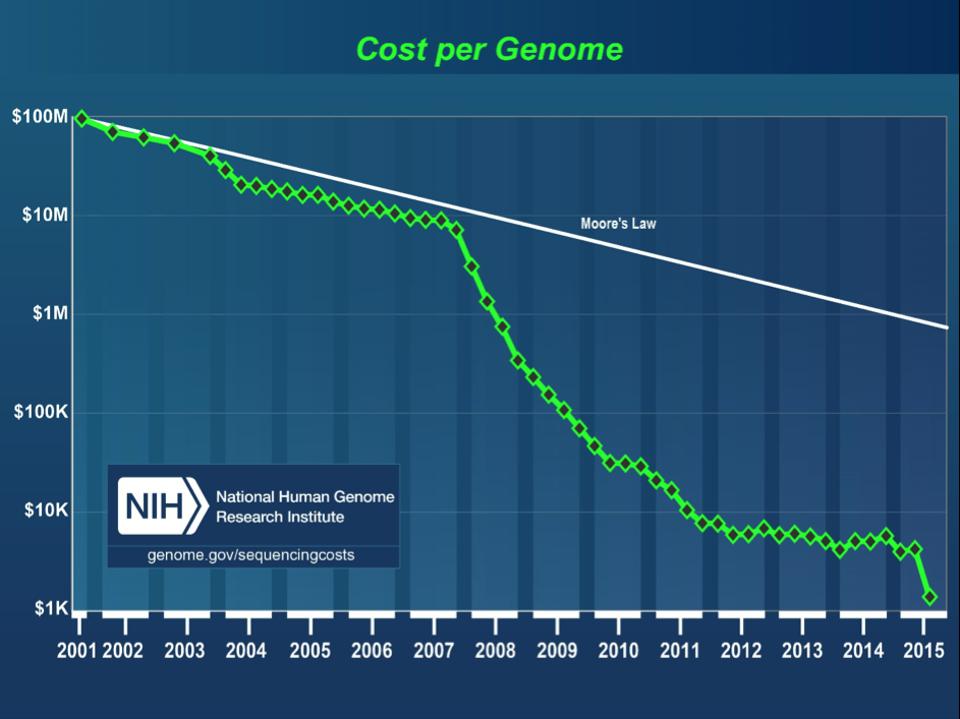
Still, we are far from taking full advantage of the Laws of Zero in information. Just consider the sad state of Covid-19 testing, where wait times of up to two weeks are rendering test results “useless” for guiding public health strategies, quarantines and contact tracing. Instead, imagine building a world where every bit of such information is available when you need it to enable and manage a Future Perfect.
Energy
A joke in the world of energy imagines Alexander Graham Bell and Thomas Edison coming back to life today. Bell would be amazed by wireless communications, by the small size of phones, by texting and all the other apps. What would he even do with an iPhone? Facetime? Fortnite? TikTok? Where would he start? By contrast, Edison would look at the electric grid and say, “Yeah, that’s about where I left things.”
Fortunately, big change is finally afoot.
When Bell Labs developed the first solar photovoltaic panel in 1954, the cost was $1,000 per watt produced. That means it cost $75,000 to power a single reading lamp – maybe a little pricey. By 2018, solar was down to 40 cents a watt. A drop in price by a factor of 2,500 over six decades isn’t Moore’s law, but it’s certainly headed toward that magic number: zero.
Wind power is also on an aggressive move toward zero – prices are down nearly 50% just in the past year. Contracts were recently signed for wind power in Brazil at 1.75 cents per kilowatt hour, about one-fourth of the average of 6.8 cents per kwh worldwide for coal, considered to be the cheapest of the conventional energy sources.
The key holdup for renewable energy has been batteries. There has to be some way to store solar and wind energy for when you need it, which means the need for lots and lots of battery capacity. Fortunately, batteries are progressing on three key fronts: battery life, power and cost. CATL, the world’s top producer, recently announced a car battery that can operate for 1.2 million miles, which is 8 times more than most car batteries on the market today. And, as the figure below by BloombergNEF shows, battery prices have plunged 87% in the past 10 years. Even Gordon Moore would be pleased.
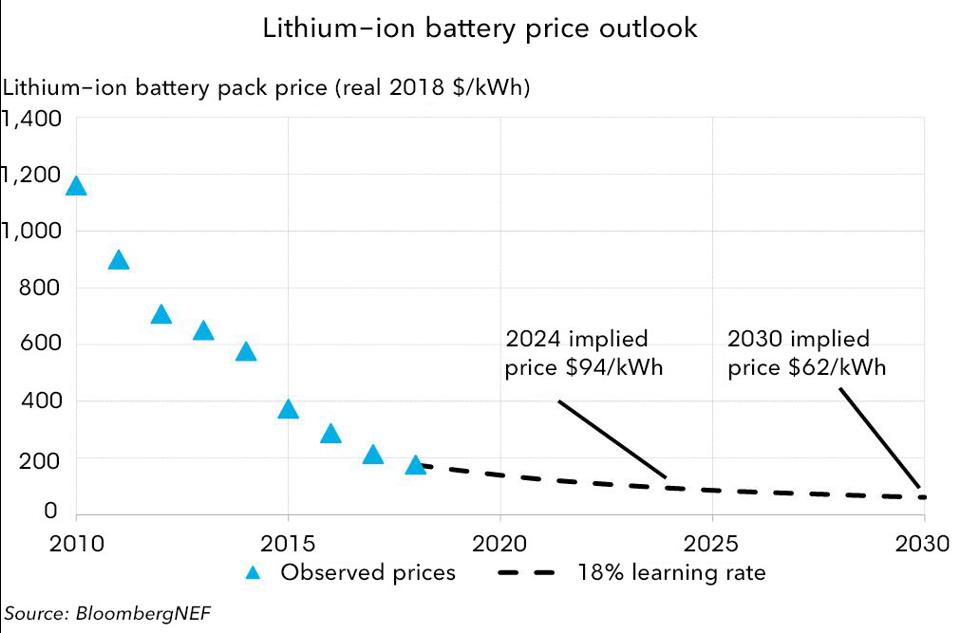
So, we have at least three cost curves that look like they’re headed toward zero: solar, wind and batteries. That’s plenty, but others are worth mentioning as well, including nuclear fission, nuclear fusion, geothermal and radical improvements in efficiency. Together, they create a Law of Zero for energy that will create unfathomable benefits. Energy drives every living thing, and unlimited energy will drive unlimited opportunities.
Edison wouldn’t know what hit him.
Water
Water is the new oil. A quarter of humanity faces looming water crises. Demand is growing with population, urbanization and wealth, taxing traditional fresh water supplies while also polluting them. But there’s hope: Limitless energy could allow for the almost magical availability of water.
By 2050, anyone near a body of saltwater could benefit from water technology breakthroughs. Desalination has always been possible but prohibitively expensive because of the energy costs, whether done by filtering out the salt through osmosis or by evaporating the water and leaving the salt behind. But cheap energy makes desalination more plausible, hopefully in time for the many cities around the world that are getting desperate for water.
Water won’t be pulled right out of thin air in great quantities any time soon, but that technology is also under development. One group won a $1.5 million X Prize by developing a generator that can be used in any climate and can extract at least 2,000 liters of water a day from the air at a cost of less than two cents a liter, using entirely renewable energy.
Cody Friesen, founder of Zero Mass Water, a startup backed by Bill Gates’ Breakthrough Energy Ventures, BlackRock and other high profile investors, says decentralized production of water will lead to benefits akin to those that come from having abundant electricity while off the grid. He says 1% to 2% of the world’s carbon footprint comes from mass-purifying today’s water; that carbon dioxide goes away when water is drawn from the air and purified at your doorstep by the sorts of solar-powered Source Hydropanels that his company produces.
Like many potentially world-changing future solutions, Friesen’s approach doesn’t make economic sense today. But his early research, products and field experiments, such as his work with the Australian Renewable Energy Agency (ARENA), helps to develop the solution for when the approach, riding on the Law of Zero for energy, becomes viable on a massive scale by 2050, if not sooner.
Where there is abundant water, along with the energy that comes from that Law of Zero, there can be food. The basics of life will be available everywhere, even to the far corners of the Earth.
Transportation
Although the enthusiasm for autonomous vehicles has taken a hit over the past couple of years – they are a really hard problem — some early successes and the multitude of startups and brilliant scientists tackling the issues make us confident that 2050 will include an unlimited number of fully autonomous vehicles.
The implications are mind-boggling. Basically, terrestrial transportation heads toward zero marginal cost. Remember, electricity is heading towards zero cost, and all these cars and trucks will be powered by batteries, so fuel is no longer an expense. In addition, the cost of driving, in terms of the time you devote to it, will disappear once we reach full autonomy. With time no longer a factor, distance won’t be, either. Even if you have to travel a couple of hundred miles, or spend two or three hours in a vehicle, you take your world into the vehicle with you and can act just as you would sitting on your couch at home. So, much of the expense associated with fuel, time and distance go away.
Now, a lot of metal will need to be shaped and maintained even in an autonomous future, so transportation won’t be free. But it will be so much less expensive than it is today that we can be profligate in throwing transportation resources at anything we want to design for the Future Perfect. So, think in terms of a world where fuel is free and, thus, infinite, and where many considerations of time and distance no longer matter.
Yes, lots of people and businesses will have to adapt. Most notable are the 4.5 million professional drivers in the U.S., but they’re just the start—and it won’t all be on the negative side of the ledger. Autonomous vehicles will also change emergency rooms (which currently treat some 2.5 million people each year after auto accidents and, based on current estimates, might treat only 10% as many once AVs become ubiquitous). We know that the vast majority of the roughly 40,000 people who die on U.S. roads every year will miss that appointment with death (Yay!) and keep living productive lives.
We also know that health, wealth, education, economic mobility and more will all improve, because access to transportation currently constrains so many people, and those limitations go away.
Not all the Laws of Zero will kick in right away. The ubiquity of water, in particular, will take time to play out, partly because getting to zero cost for energy will also take a bit. For all these Laws of Zero, supporting technologies need to continue to mature and be helped along by some as-yet-to-be-invented (but inevitable) scientific breakthroughs.
But the core question is fascinating and important: How will these Laws of Zero let us design and build as grand a world as possible for our children and their kids by 2050?
What can removing today’s actual and cognitive restraints let us realistically project for them in terms of electricity, food, manufacturing, transportation, shelter, climate, education, healthcare and—dare we say it?—the political and social environment that will define the equity, civility, privacy and human rights in the world in which they live? How much can we increase the odds of success if we more clearly envision the Future Perfect enabled by the Laws of Zero, and begin now to focus both inspiration and perspiration towards inventing it?
The short answer is: A lot, if we step up to the challenge. By doing so, we can make next few decades ones where centuries happen.
This originally appeared in Forbes.




